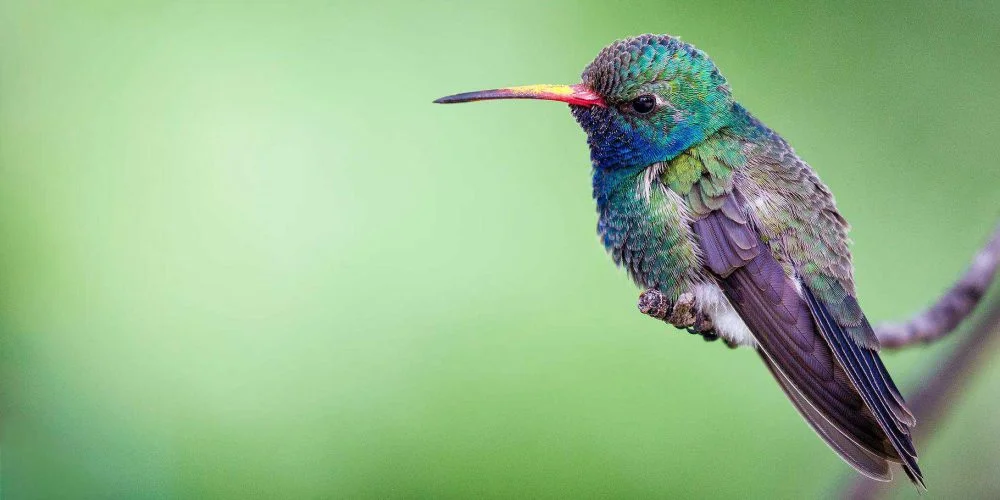
Hummingbirds are small, beautiful birds that have many different species around the world.
In Florida you can find 11 different hummingbirds, these are:
- Ruby-throated Hummingbird
- Black-chinned Hummingbird
- Bahama Woodstar
- Anna’s Hummingbird
- Costa’s Hummingbird
- Broad-tailed Hummingbird
- Rufous Hummingbird
- Allen’s Hummingbird
- Calliope Hummingbird
- Broad-billed Hummingbird
- Buff-bellied Hummingbird
Want to learn more? Take a look at the Compete Hummingbird Guide Book – a classic!
The Ruby-throated Hummingbird is noted to be the most common hummingbird in the state.
Florida is a southern state with a largely tropical climate, it has very hot and humid summers. There are 175 different state parks across Florida and there are three different national parks.
The most widely recorded number of hummingbirds is in the Tampa Bay region of the state and this also where most of the species are found.
Now that we’ve talked a little about Florida and the hummingbirds that reside there, let’s have a look at the different birds in more detail and see whereabouts you can find them and how to attract them to your home.
Take a look at our article on the Best Hummingbird Feeder!
What Hummingbirds can be seen in Florida?
Table of Contents
1. Ruby-throated Hummingbird
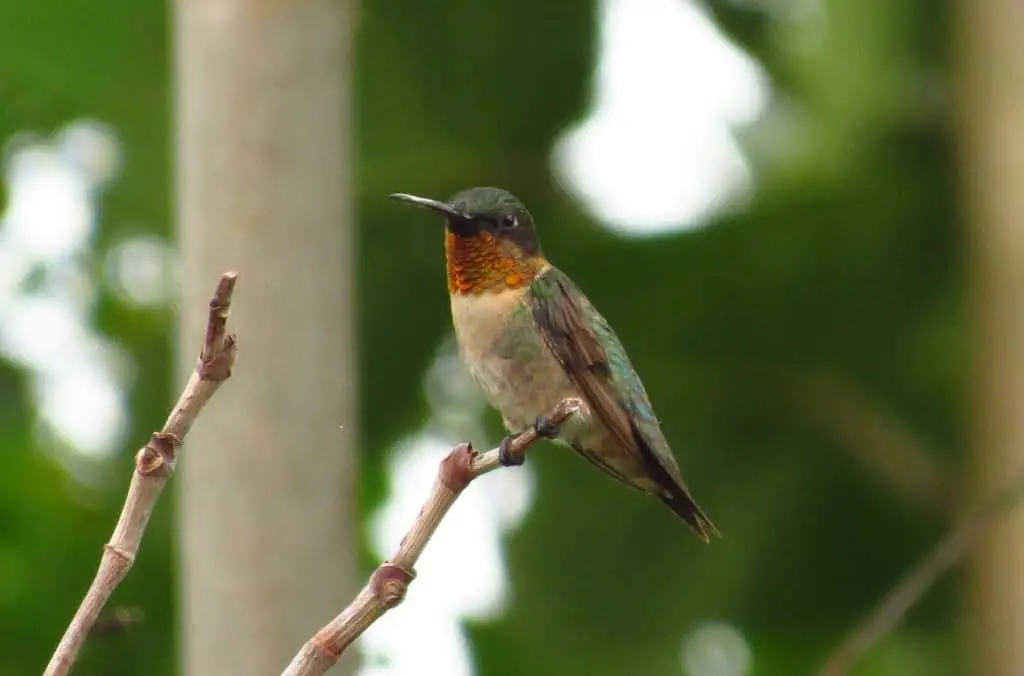
Fun Facts:
- These hummingbirds feed on nectar, particularly the nectar of both orange and red tubular plants such as honeysuckle.
- These birds are tiny and only weigh 2-6g with their wingspan being 8-11cm.
Only the males of this species have ruby coloured throats. The females have white bellies and necks with brown feathers covering their wings and backs.
These birds are only very small and like to visit meadows and orchards.
Males make their territory before the breeding season so that when a female approaches, they are able to court her with their display flights.
These displays involve looping dives of up to 50ft and if the female is impressed, she will move onto the male’s perch before he makes side to side flights in front of her.
Ruby-throated Hummingbirds can be seen in Florida all year and they tend to be more abundant in the north and central regions of the state during the breeding season.
They only tend to be in the very south of the state outside of the breeding season.
If you want to bring one to your garden, you should make sure to have special hummingbird feeders as well as tubular plants that they can feed from.
2. Black-chinned Hummingbird
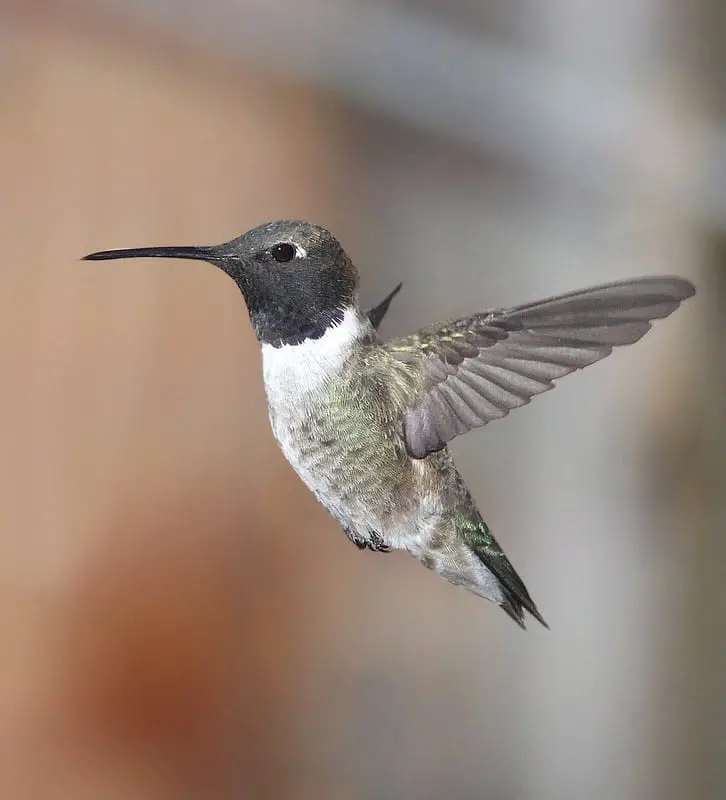
Fun Facts:
- They most commonly consume nectar from flowers but will also eat insects when they are more readily available.
- These birds are very small with a weight range of 2.3-4.9g and have an average wingspan of 11cm.
Both sexes of this species have pale white or grey underbellies and the males have dark necks with black and iridescent purple feathers.
They are similar in size to the Ruby-throated Hummingbird and like to stay near rivers.
This species of hummingbird has not been as well studied as others so there is not as much information.
It is known that the males performing courting displays that involves dives of up to 100ft.
They have also been observed finding a high perch to survey their territory after they have spent time feeding.
In Florida, you are most likely to catch a glimpse of this tiny bird in the winter to help them cope with the colder months.
They have only been seen in the central and northern areas of the state.
These birds are easy to attract to your garden and simply require an appropriate hummingbird feeder. Appropriate tubular plants will help as well and remember to change your feeder every few days.
3. Bahama Woodstar

Fun Facts:
- These birds only really consume nectar from flowers but have occasionally been seen eating insects.
- These hummingbirds are small and only weigh an average of 2.9g.
These hummingbirds are very small and are not as heavy as others. They have backs that are covered with green and gold feathers and they are very rarely seen anywhere in the United States.
These birds spend a lot of time in gardens but they can also commonly be found in pine forests.
Their breeding season is in April and the males will perform displays for the females, these displays have been called Shuttle Displays and there are three different types of these displays.
These birds are very rare and you are lucky to see one in Florida but they are most likely to be in the state from the late summer to early autumn.
Most reports of these species have been in the south-eastern areas of the state.
If you are lucky enough to see one and want to bring it to your garden, make sure to have special hummingbird feeders filled with nectar or sugar water.
4. Anna’s Hummingbird
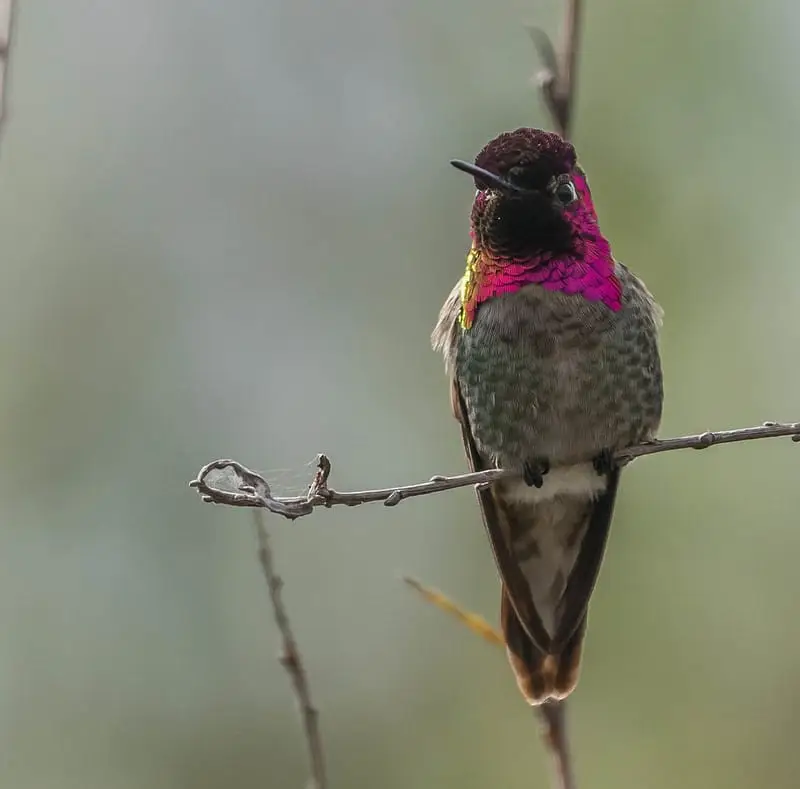
Fun Facts:
- These birds will eat nectar from many different flower species and they have also been known to steal insects from spider webs.
- These birds are medium sized for a hummingbird, weighing 3.6g.
These hummingbirds have feathers of mostly green and grey colours and the males of these species have vivid, deep pink feathers on their necks.
The Anna’s Hummingbird does not shy away from urban habitats and can usually be found there.
Males will court a female by performing large swooping dives and dances.
They will also sometimes perform a song whilst doing these displays. These birds are not monogamous and do not stay in breeding pairs.
These birds are not migratory, nor are they very common in Florida. You are most likely to see one during the winter seasons and in the north of the state.
If you have the appropriate hummingbird feeders, it is relatively easy to attract these birds to your garden. Although you will have a harder time doing so in Florida.
5. Costa’s Hummingbird
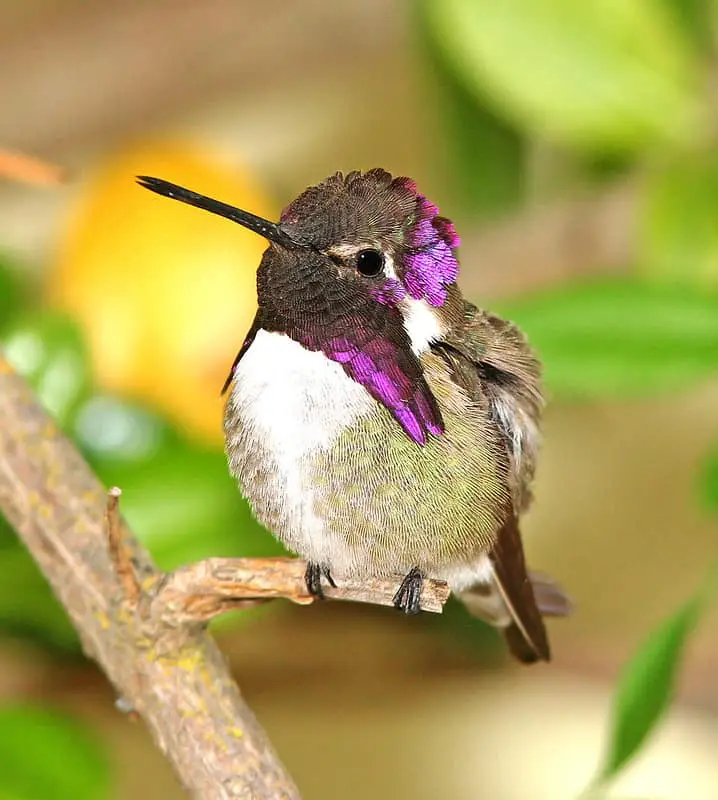
Fun Facts:
- These birds will feed on nectar and will also quite often feed on flying insects.
- Weighing only 2-3g they are slightly smaller on the hummingbird weight scale.
These birds are mostly covered in duller and paler feathers but the males have bright purple feathers on their head and face.
In the wild these birds are most commonly found around desert habitats.
Males are very defensive of their territory, especially during the breeding season.
They will pick a couple of large perches in their territory from which they will call out to defend it.
Males have a strict courtship display that they stick to which involves a series of aerial dives.
These displays usually last for an average of about 30-40 seconds but they have been observed performing for as long as 4 minutes.
Breeding pairs do not stay together, they will usually mate with multiple individuals and the females will be the one to take care of the young.
These birds are commonly found to the west of the United States and are very rarely seen in Florida.
You are only likely to see this bird during the non-breeding months and in the north west of the state.
These hummingbirds are most likely to come to your garden if you have a sugar water feeder, unlike some other species, do not add food colouring to the mix to attract the Costa’s Hummingbird.
6. Broad-tailed Hummingbird
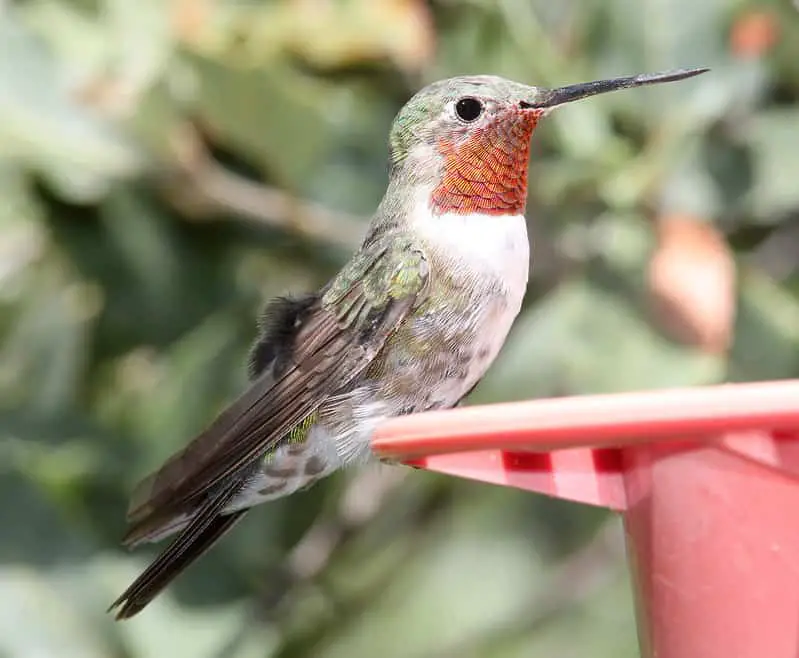
Fun Facts:
- These birds will feed on an even distribution of nectar and insects, mothers will feed insects to their newly hatched young.
- These birds are medium sized for hummingbirds and weigh 2.8-4.5g.
As the name suggests, these birds have broad feathered tails.
Their backs are mainly covered in green feathers and males have iridescent pink throats.
During the mating seasons, these birds will mate with several of the species and will not stay together, males will mate with several females.
They will perform dramatic courtship displays for any females that enter their territory.
Broad-tailed hummingbirds have the ability to go into torpor when it is cold and they cannot find enough food, it is a miniature hibernation where they slow their heart rate to conserve energy.
Whilst these hummingbirds are only found in a very small area of Florida, they do spend all year there.
You will only be able to see this bird in the south-east of Florida.
You will be very lucky to attract one of these birds to your garden, but if you want to try make sure you have a sugar water feeder set up and various tubular flowers around your garden.
7. Rufous Hummingbirds
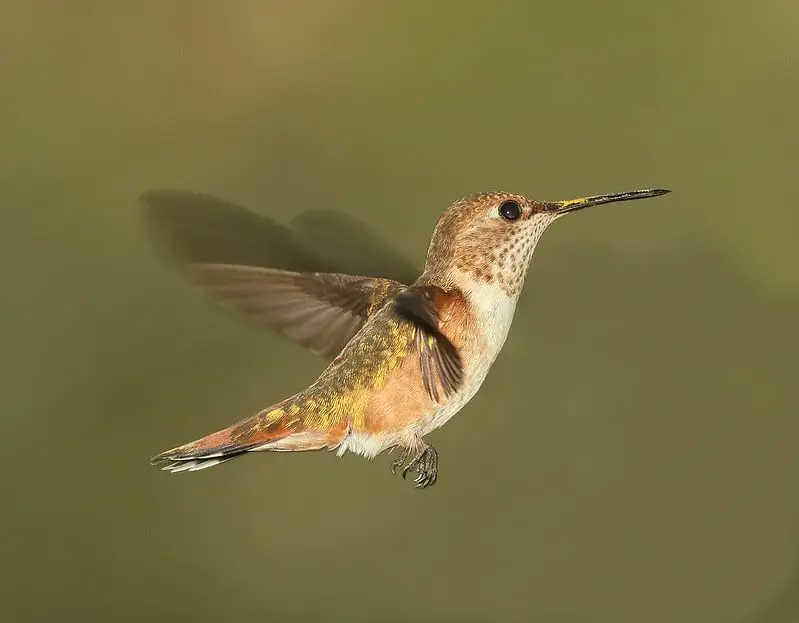
Fun Facts:
- Nectar from tubular plants is the main source of food for this bird.
- These birds are average sized for a hummingbird and weigh 2-5g.
Like lots of other hummingbirds, the females of this species have mostly dull and green feathers. The males on the other hand have feathers of iridescent orange shades.
These birds are migratory and are usually seen in open areas of land.
Rufous Hummingbirds are very aggressive, they can be aggressive over territory and food to both their own species and other hummingbird species.
Food appears to be more important than breeding as males have been seen chasing females away from manmade bird feeders, even in the middle of the breeding season.
These birds are found in several places across Florida, mainly in the north western regions of the state.
They are also usually only found in the winter seasons when they migrate to deal with the colder months.
These birds are actually very fond of gardens and may sometimes stay there without any special flowers or feeders.
But they may also deter any other hummingbird species from visiting your garden.
8. Allen’s Hummingbird
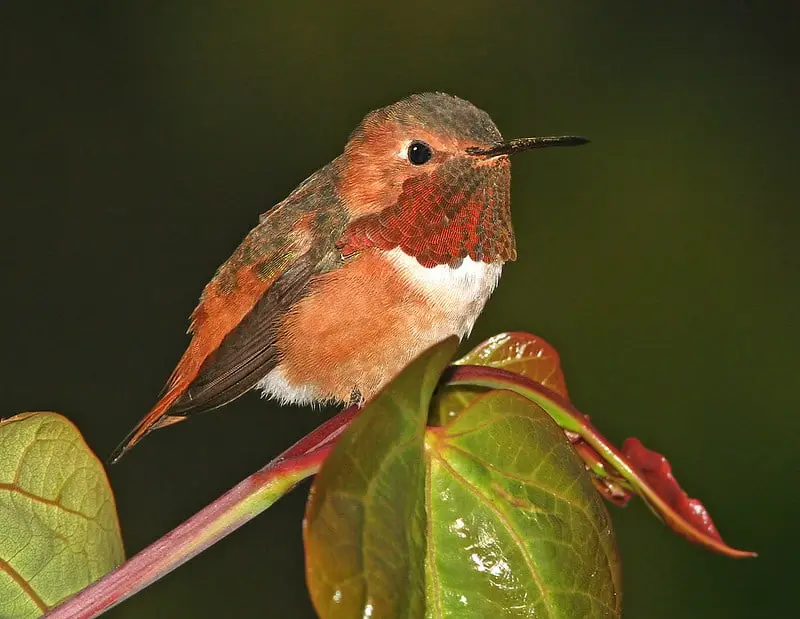
Fun Facts:
- A lot of this bird’s diet comes from nectar, but they will also eat small amounts of insects.
- They are similar in size to a lot of other hummingbirds, weighing 2-4g.
Allen’s Hummingbirds are covered in coppery colours when they reach adulthood. These colours are paler shades on the females and brighter on the males.
They are usually found in coastal areas with males being in more open spaces.
During the breeding season, males will pick a permanent perch to perform their courtship displays for the females.
As with most other hummingbirds, males will mate with multiple females and the pairs do not stay together, females will take care of the young on their own.
These birds have only been seen in Florida during the winter months when they will migrate to deal with the cold weather.
They have only been spotted migrating to the south east of the state.
You will have the best chance of attracting these birds by placing sugar water feeders in your garden, keep them filled in the winter and change them every few days for freshness.
9. Calliope Hummingbird
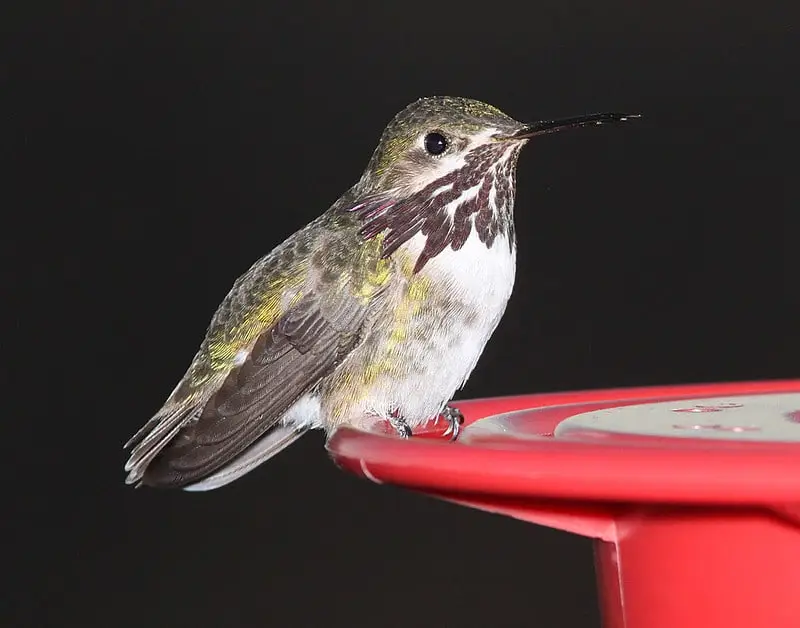
Fun Facts:
- These birds will consume nectar as their main food, usually from cupped flowers.
- Calliope Hummingbirds are on the smaller side only weighing 2.4-3.3g.
These birds have bright white bellies and the males of the species have scattered purple feathers on their plumage.
They are commonly found in open areas such as meadows, but they will breed at higher elevations where possible.
Males are very defensive over their territory and will spend a large amount of their time on high perches observing their territory.
To court a female, males will put on a shuttle display which involves hovering by the females and making their flapping wings sound like bees buzzing.
These birds are not permanent residents in Florida and tend to only enter the state during the non-breeding seasons.
They have only been seen in the north western areas of the state, most commonly in winter.
These birds are harder to entice into your garden but you may still get one visiting if you put up a sugar water feeder. Also adding tubular and colourful flowers will increase your chances.
10. Broad-billed Hummingbird
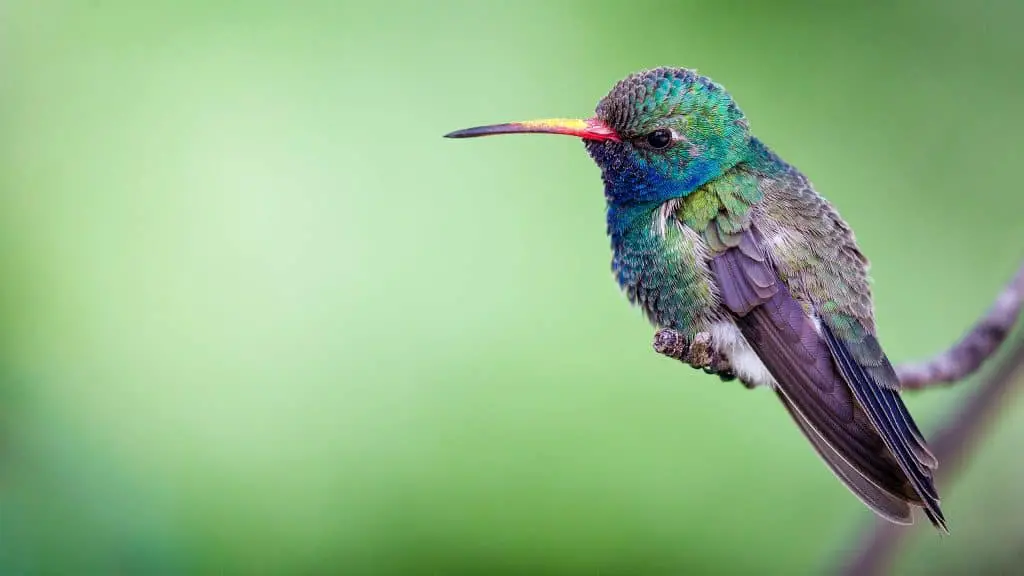
Fun Facts:
- Nectar is the primary food source for these birds but they will also eat insects that they find on plants.
- These birds are average for a hummingbird and have a weight range of 3-4g.
These birds are covered in bright blue and green feathers with a bright red bill. They usually spend their time foraging in canyons and meadows.
Males will call for females from their perches to attract them into their territory.
Once a female enters the male’s territory the male will then perform a courtship display for them.
Males will sometimes perform the same display to other males of the species, this is thought to be a warning display.
Breeding pairs do not stay together, and females raise their young by themselves.
These birds will not stay in Florida as permanent residents and are much less frequent than other hummingbird species.
They will only visit the state during winter when they need to migrate to deal with the cold and they are then usually only seen in the western areas of the state.
Due to their range, they are not frequent garden visitors. But they can be attracted by a sugar water feeder, without any food colouring, they also tend to visit brightly coloured flowers.
11. Buff-bellied Hummingbird
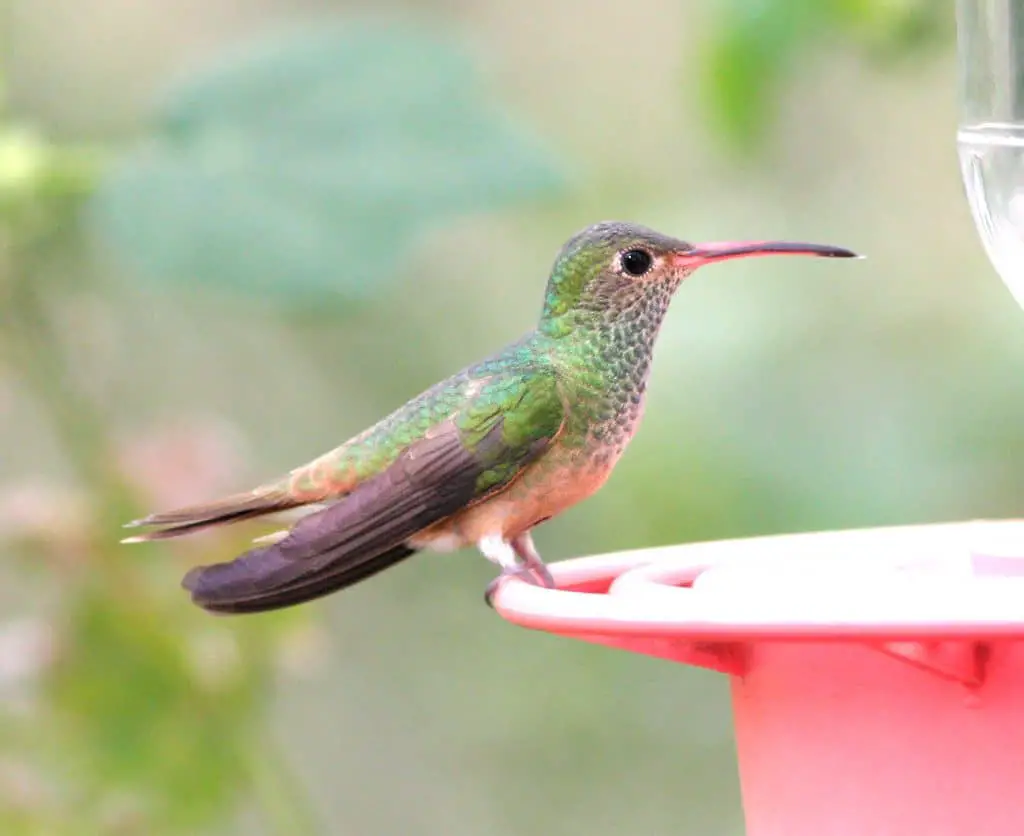
Fun Facts:
- The only thing known about their diet is that they consume nectar.
- These birds are average sized for hummingbirds and weigh between 2 and 4g. We do not know their average wing span.
These hummingbirds are average sized and are covered in dullish green feathers and they have a long, bright red beak.
This species has been studied a lot less than other species but they are known to prefer to stay in areas of open woodlands.
Both males and females in this species are very defensive and aggressive, particularly over food sources.
Not much is known about their specific courtship displays, but it is known that breeding pairs do not stay together and that the females raise the young completely on their own.
They have a small range and only tend to be in Florida outside of the breeding season.
These sightings have been in the north west of the state and usually in the winter months.
As these birds have not been studied as thoroughly, there are not many specifics on how to attract them to your garden.
You will be incredibly lucky if you get one of these little guys as a visitor and your best hope of seeing one is to place a sugar water feeder in your garden.

More Articles.
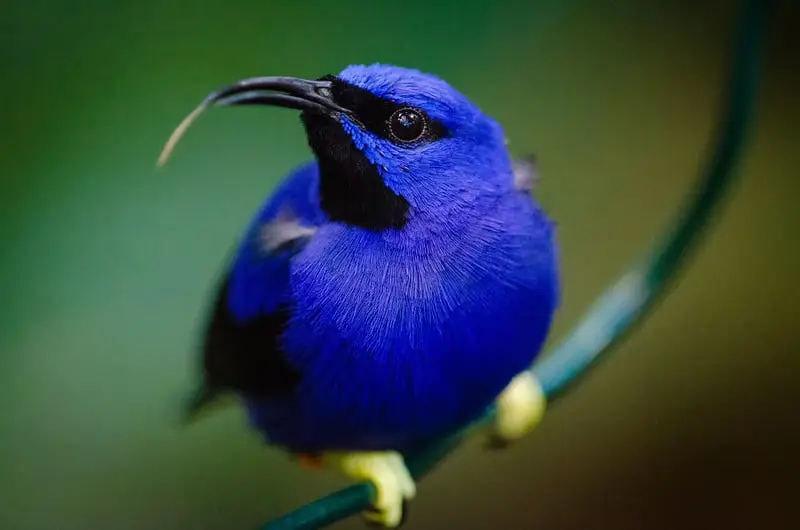
North American Birds with Blue Heads (16 Species with Pictures and Sounds)
North America is filled with many wonderful birds with blue heads – in fact, there
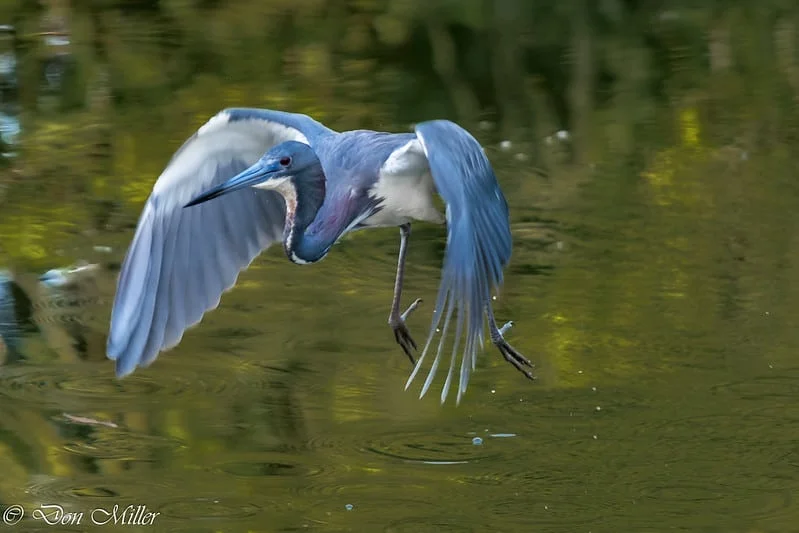
Birds with Blue Beaks (7 Species with Pictures and Sounds)
North America is filled with many wonderful birds with blue beaks– in fact, there are
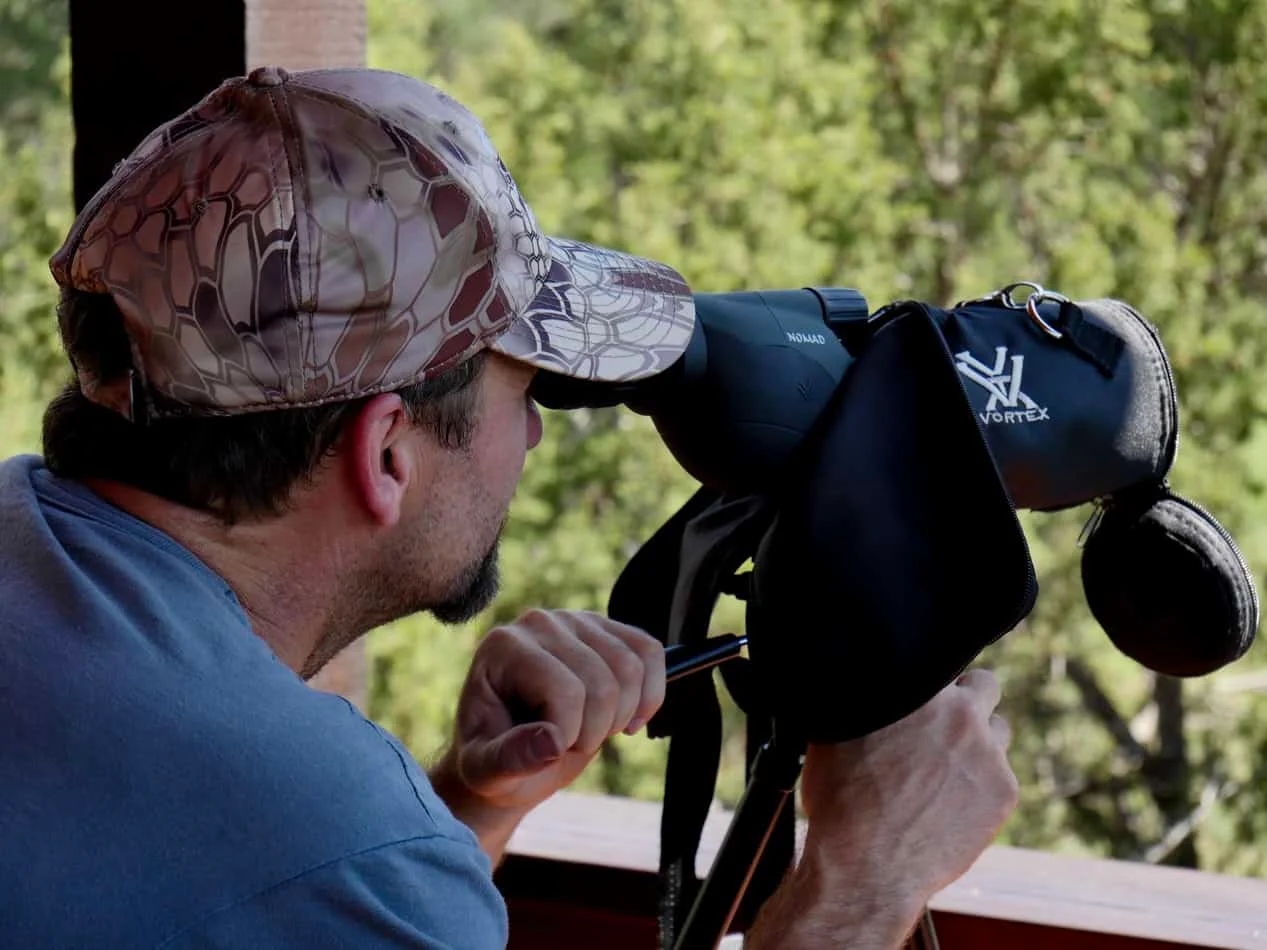
Best Spotting Scopes for Birding 2020
When it comes to birdwatching, you want to make sure that you have the right

About Us
We are avid bird-watchers who recently retired, allowing us more time to travel the world. Fortunately, we have managed to visit numerous countries around Europe, Asia, and America. Watching and photographing birds has been a passion for many years and we are making the most of the extra time on our hands!
